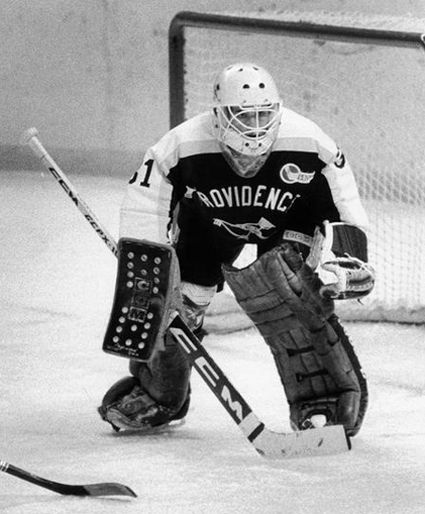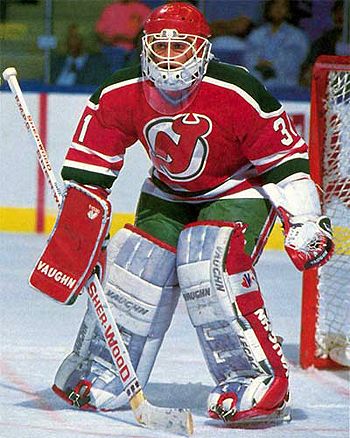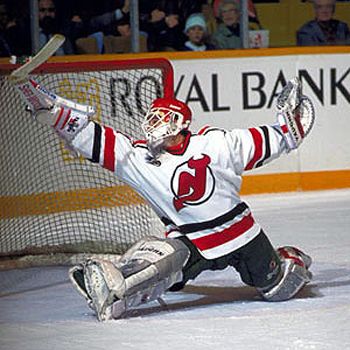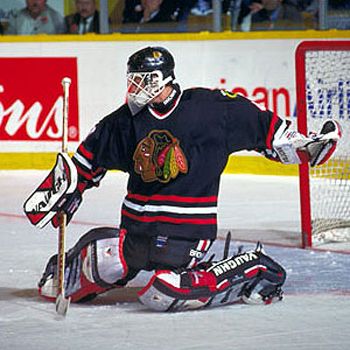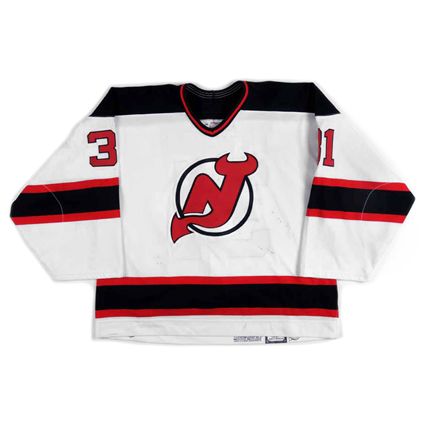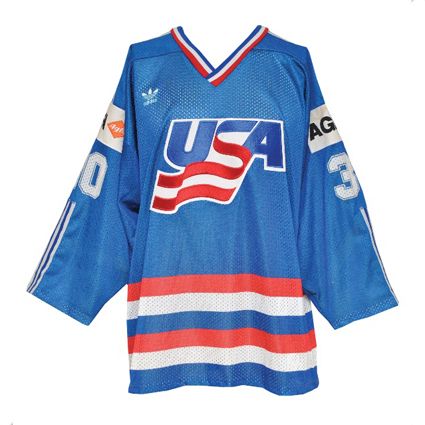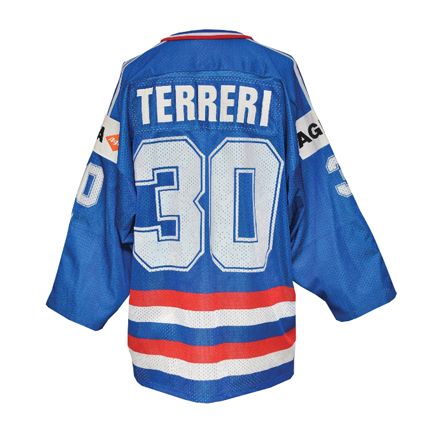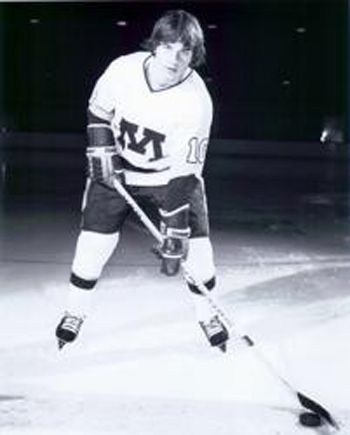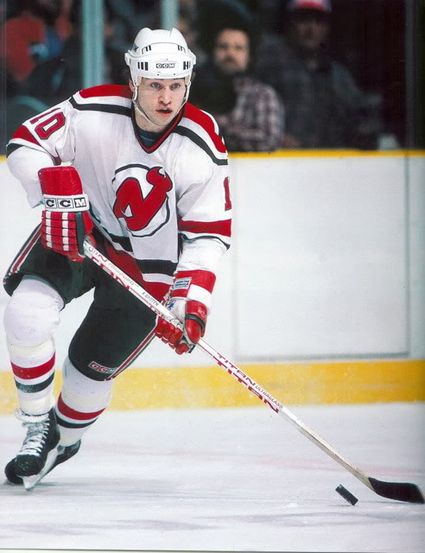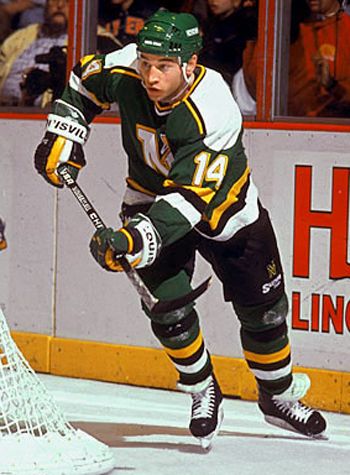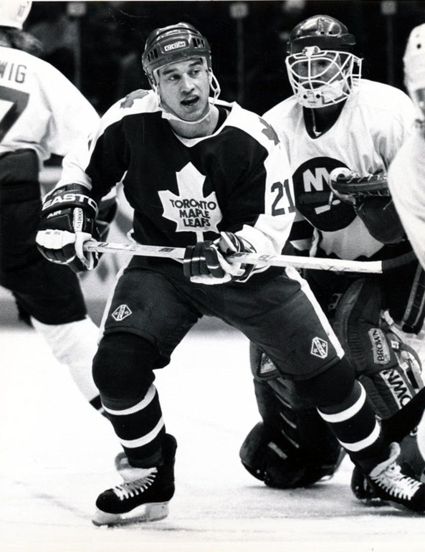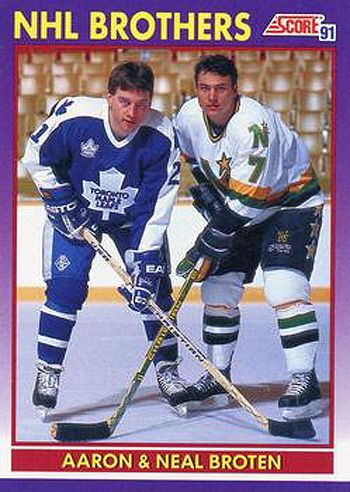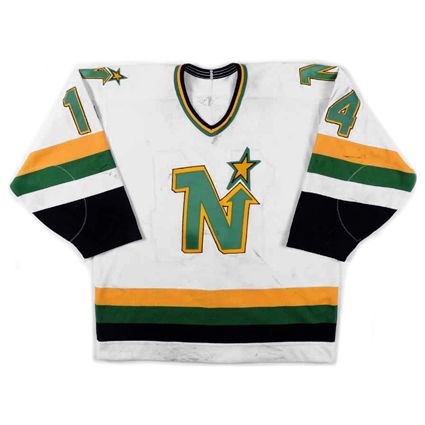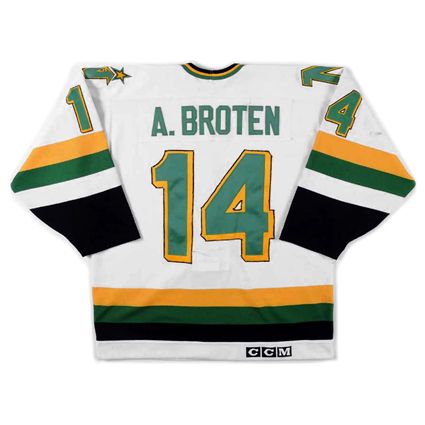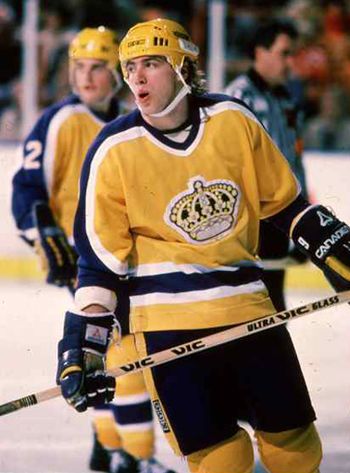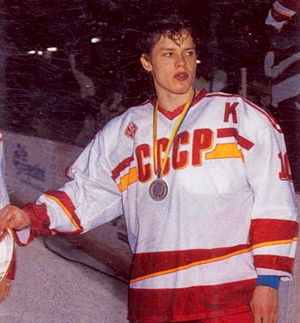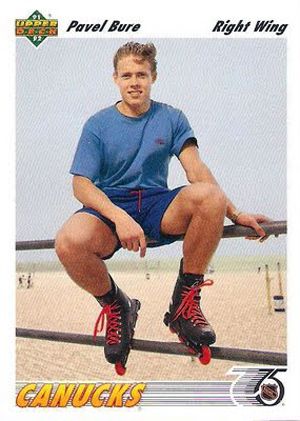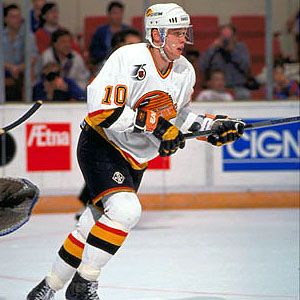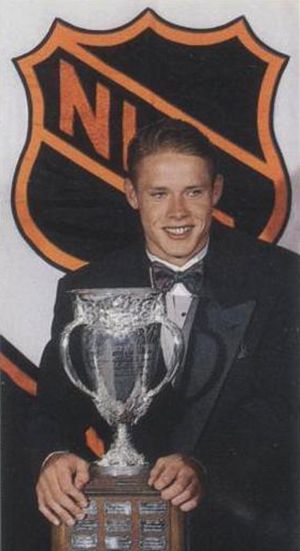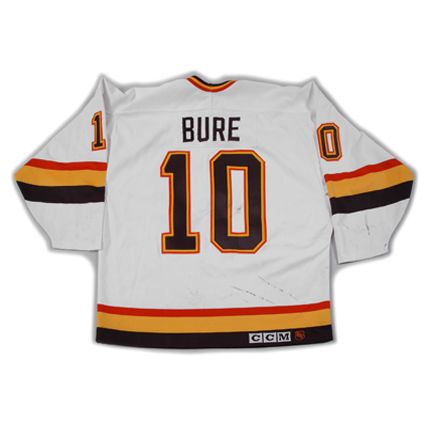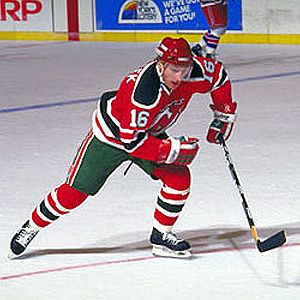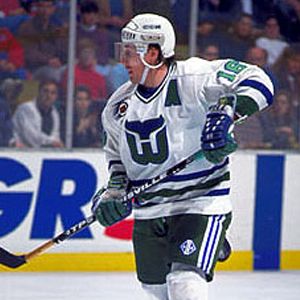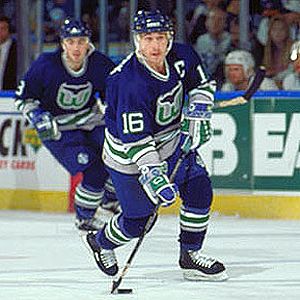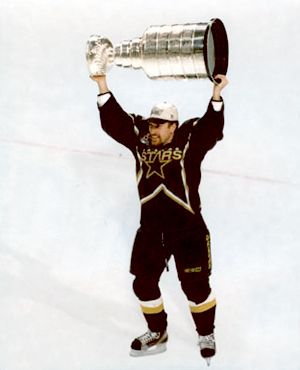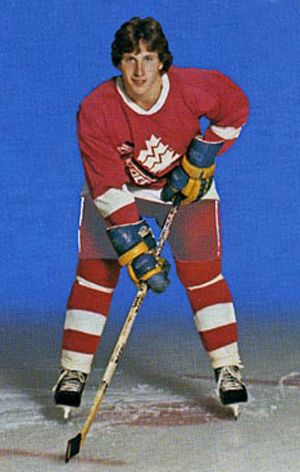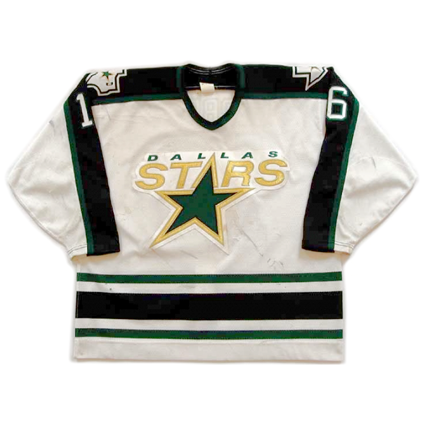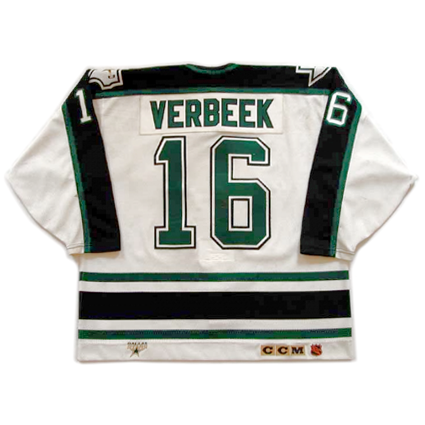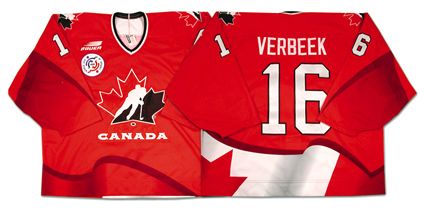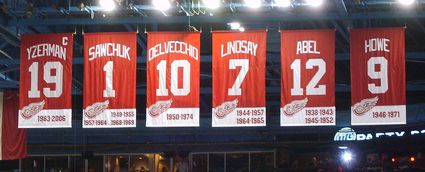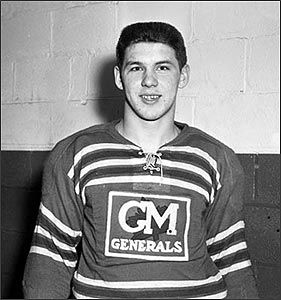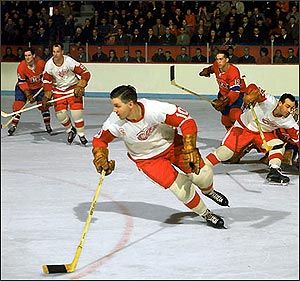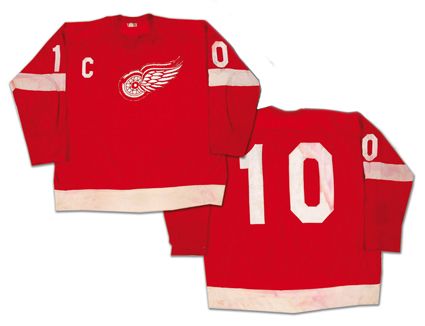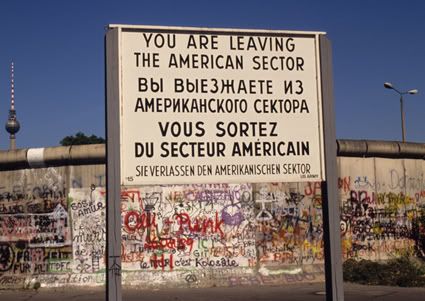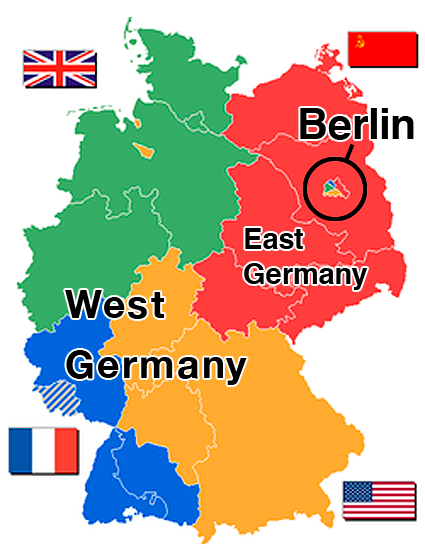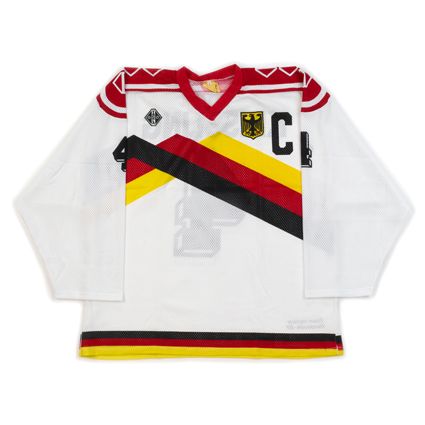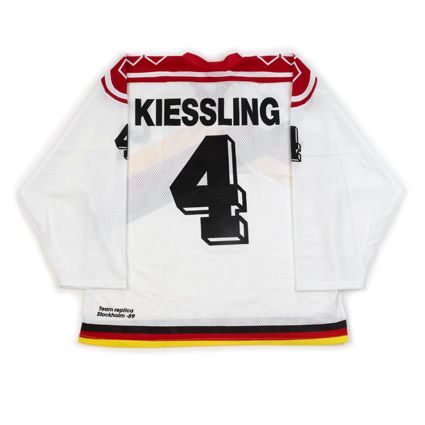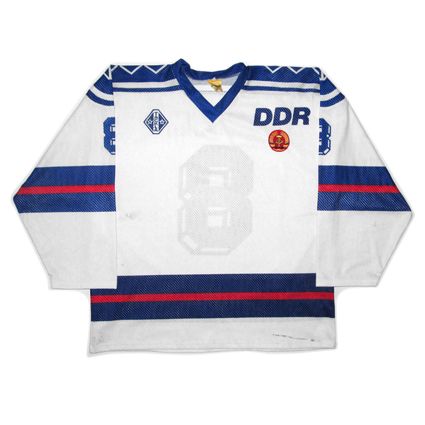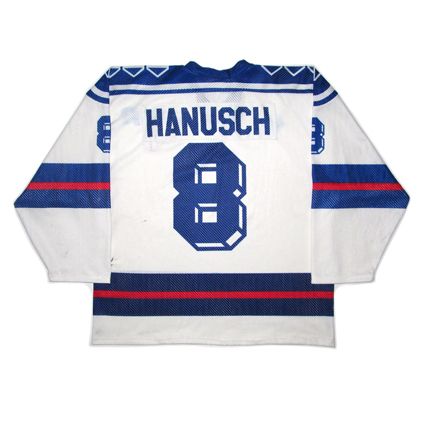During the NCAA tournament, Providence survived a three overtime game against Boston College in the Frozen Four where Terreri and BC goalie Scott Gordon became the first goalies to take a water bottle out to the nets with them. His outstanding season earned him an invitation to play for the United States at the 1985 World Championships.
He would play one final season for Providence and return to the World Championships for the US again in 1986, playing in five games and posting a shutout.
Terreri began his professional career the following 1986-87 season with 14 games for the Maine Mariners of the AHL and also made his NHL debut when he was called up by the New Jersey Devils, who had drafted him back in 1983, appearing in 7 games. He also played in his third consecutive World Championships for the United States that spring.
Terreri's focus for the 1987-88 season was with the US National Team. Although he did play 7 games with the Utica Devils of the AHL, he saw action in 26 games for the National Team in preparation for the 1988 Olympics in Calgary where he saw time in 3 games and finishing with a 1-1 record.
The following season was spent primarily with Utica, having a solid 20-15-3 season in 39 appearances as well as playing in 8 games up with New Jersey.
He became a full time NHLer in 1989-90, playing 35 games for the Devils which finally included getting his first NHL victory, which had eluded him in his previous limited chances with the Devils.
After backing up Sean Burke the previous season, the roles were reversed for 1990-91, Terreri started the majority of the Devils games, posting a goals against average under three at 2.91 in 53 games and set a career best with 24 wins. He played in another 54 games in 1991-92 in tandem with Craig Billington.
Again teamed with Billington, Terreri got the majority of the playing time with 48 games in 1992-93.
1993-94 saw a change in New Jersey with the establishment of goaltender Martin Brodeur, who saw time in 48 games to Terreri's 44. He was limited to 15 games in strike shortened 1994-95 season, but the Devils were able to prevail in the playoffs where Terreri played in one game as New Jersey captured the Stanley Cup.
Following that success, after just 4 appearances early in the 1995-96 season, Terreri was traded to the San Jose Sharks in November.
With incumbents Arturs Irbe and Wade Flaherty already competing for playing time, Terreri took over as the Sharks number one, making 46 appearances versus Flaherty's 24 and Irbe's 22. In 1996-97, free agent Kelly Hrudey arrived, costing Terreri playing time. After 22 games, Terreri was dealt to the Chicago Blackhawks in January as part of a package for Ed Belfour. Following the season Terreri played in his fourth World Championships for the United States, his first Worlds in ten years. In 6 games, he went 2-3-1 with a 2.69 goals against.
Terreri spent the entire 1997-98 season with the Blackhawks backing up Jeff Hackett, save for three starts for the Indianapolis Ice of the IHL.
He was then sent back to New Jersey by the Blackhawks prior to the start of the 1998-99 season where he would spend the next three seasons backing up the now firmly established number one Brodeur, which included a second Stanley Cup championship in 2000.
Late in the 2000-01 season, Terreri was dealt to the New York Islanders where he would play the final 8 games of his NHL season. He would retire as a player with 406 games played and a 172-43-9 record and two Stanley Cups.
Terreri then became an assistant coach for the Devils Albany River Rats AHL affiliate beginning with the 2001-02 season. Unexpectedly, due to injuries he would be pressed into emergency service one final time when he played two periods of relief in a game for the River Rats during the 2005-06 season!
Today's featured jersey is a 2000-01 New Jersey Devils Chris Terreri jersey. Under the leadership of Lou Lamoriello, the Devils dropped the green from their jerseys in 1992 and have since resisted all efforts to change jerseys or introduce a third jersey of any kind, despite the potential financial gains alternate jerseys can provide modern pro sports teams.
Not even the change to the new Reebok Edge jerseys in 2007 could deter Lamoriello, and the Devils look remained exactly as it was and apparently always will be. The Devils even went so far as to issue a press release stating that there would be no new unveiling event of their "new" Reebok version since there was nothing new to see!
Bonus jersey: Today's bonus jersey is a 1987 United States National Team Chris Terreri jersey as worn during the World Championships. Adidas jerseys were used by teams in the IIHF World Championships during the 1980's through the 1987 season until being replaced by the Finnish company Tackla in 1988.
In today's video section, Terreri makes a great glove save on Alexi Yashin of the Senators.
Next, he has a great sequence against the Blackhawks.
Finally, Terreri nearly joins an exclusive club as he nearly scores a goal while with the Sharks.

